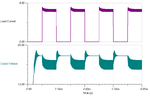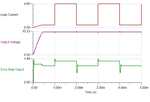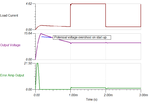E-design
Advanced Member level 5
This guy has a well-known YouTube channel where he covers a wide range of topics for the electronic hobbyist. He started a series on a DIY power supply for viewers to follow along and hopefully end up with a working design. Unfortunately, the series never made it past #14 due to unexpected stability issues that were discovered (7:00) in the design.
https://www.youtube.com/watch?v=gNJqL5Msa3s&index=13&list=PLDBuVMDVJaX2wCN84B5sjFMKDsMbsS7jq
As far as I can determine there seem to be a lot of people waiting for a solution to the problem, so they can complete the PSU. The last presentation was on Aug 14, 2015 where he touched upon the stability issues but never followed up with any solution.
https://www.youtube.com/watch?v=JBH5Eq9SYKs&index=14&list=PLDBuVMDVJaX2wCN84B5sjFMKDsMbsS7jq
I thought this would be a great topic for discussion by our members and help to come up with a possible solution to his problem. Beginners may learn something about the problem and solutions proposed by members.
This link is to the complete project and videos:
https://www.mjlorton.com/bench-power-supply-project/
I did confirm doing my own transient simulation that the circuit as presented is plagued with oscillations.
https://www.youtube.com/watch?v=gNJqL5Msa3s&index=13&list=PLDBuVMDVJaX2wCN84B5sjFMKDsMbsS7jq
As far as I can determine there seem to be a lot of people waiting for a solution to the problem, so they can complete the PSU. The last presentation was on Aug 14, 2015 where he touched upon the stability issues but never followed up with any solution.
https://www.youtube.com/watch?v=JBH5Eq9SYKs&index=14&list=PLDBuVMDVJaX2wCN84B5sjFMKDsMbsS7jq
I thought this would be a great topic for discussion by our members and help to come up with a possible solution to his problem. Beginners may learn something about the problem and solutions proposed by members.
This link is to the complete project and videos:
https://www.mjlorton.com/bench-power-supply-project/
I did confirm doing my own transient simulation that the circuit as presented is plagued with oscillations.



